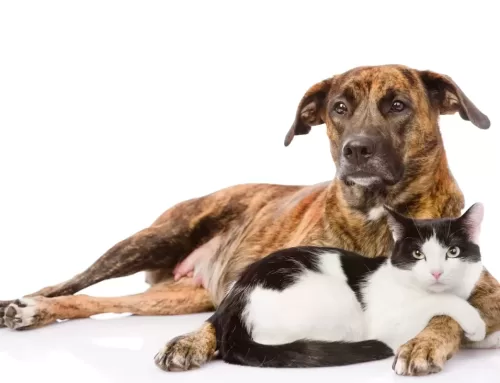So, your pet has been recently diagnosed with congestive heart failure. Understanding your pet’s heart disease may be like trying to understand a foreign language. While you may not understand the details of complicated medical terminology, it is important that you understand the basics of what is going on.
Let’s start with the basics.
The heart is a constant pump that circulates blood to the body and lungs. Think of it as a swimming pool. The heart is like the motor that pumps and circulates the water from the pool through the filters and back to the pool.
How does my pet get congestive heart failure?
Most congestive heart failure does not happen overnight. It is a progressive disease that happens over time. The heart is still working, but the pump is not working as efficiently and performance decreases. When the performance continues to decrease, it causes pressure buildup and causes congestion.
What happens if there is congestion?
Think of it as a plumbing problem. If the water cannot flow, the pipes will be congested and water may leak. In pets with left sided heart failure, fluid will leak into the lungs. The fluid will fill the air sacs and interfere with oxygen exchange thus making it difficult for your pet to breathe. Your pet will start breathing more rapidly, with more effort and may lead to coughing. In pets with right sided heart failure, the fluid will leak into the abdomen. The fluid build-up in the abdomen will cause your pet to have a “pot belly” appearance making it look like they have gained weight.
How can I tell if my pet has a heart problem?
If your pet is breathing more rapid, breathing with more effort than normal, excessively panting, coughing regularly, losing energy, fainting or collapsing after strenuous activity or losing appetite, please call your veterinarian immediately.
How is heart disease diagnosed?
Your veterinarian will start with a thorough physical exam and carefully listen to your pet’s heart and lungs. Then chest X-rays will be taken to look at the overall size of the heart, heart chamber enlargements, look for fluid in the lungs and determine if your pet has congestive heart failure, stable compensated heart disease or other diseases of the heart and lungs. Based on the X-rays and physical exam, if your pet has evidence of heart disease, your veterinarian may recommend an echocardiogram (sonogram of the heart), EKG, and blood pressure. These are the same type of tests that your human cardiologist will do to diagnose heart disease.
What is the treatment?
Your veterinarian may prescribe heart medication to help the heart function better to relieve the congestion and help open up the pluming problem. If your pet has congestive heart failure, a diuretic may be prescribed to remove the fluid from the lungs. Also, to help the heart function better, other medications such as Enalapril and or Vetmedin may be prescribed. There are many other heart medications that your veterinarian may prescribe depending on the diagnosis.
To manage your pet’s heart disease, the heart medications will most likely need to be administered for the rest of your pet’s life. Periodic adjustments to the dosing may be needed and regularly scheduled recheck appointments will be needed.
How can I prevent heart disease or heart failure for my pet?
Heart disease is either acquired or some pets have congenital heart disease (born with it). The majority of heart disease is acquired, meaning the normal wear and tear from age causes the heart to function sub optimally. There is no sure way to prevent heart disease, but you can help your pet live a healthy and happy life.
It is important to feed your dog a healthy diet and provide regular exercise so your pet does not become overweight. It is important that your pet get regular annual checkups from your veterinarian so heart disease can be detected early. At Vetsavers, we make it affordable so your pet can have an annual exam for only $39. For those breeds that are genetically predisposed to heart disease, a bi-annual exam is recommended.






